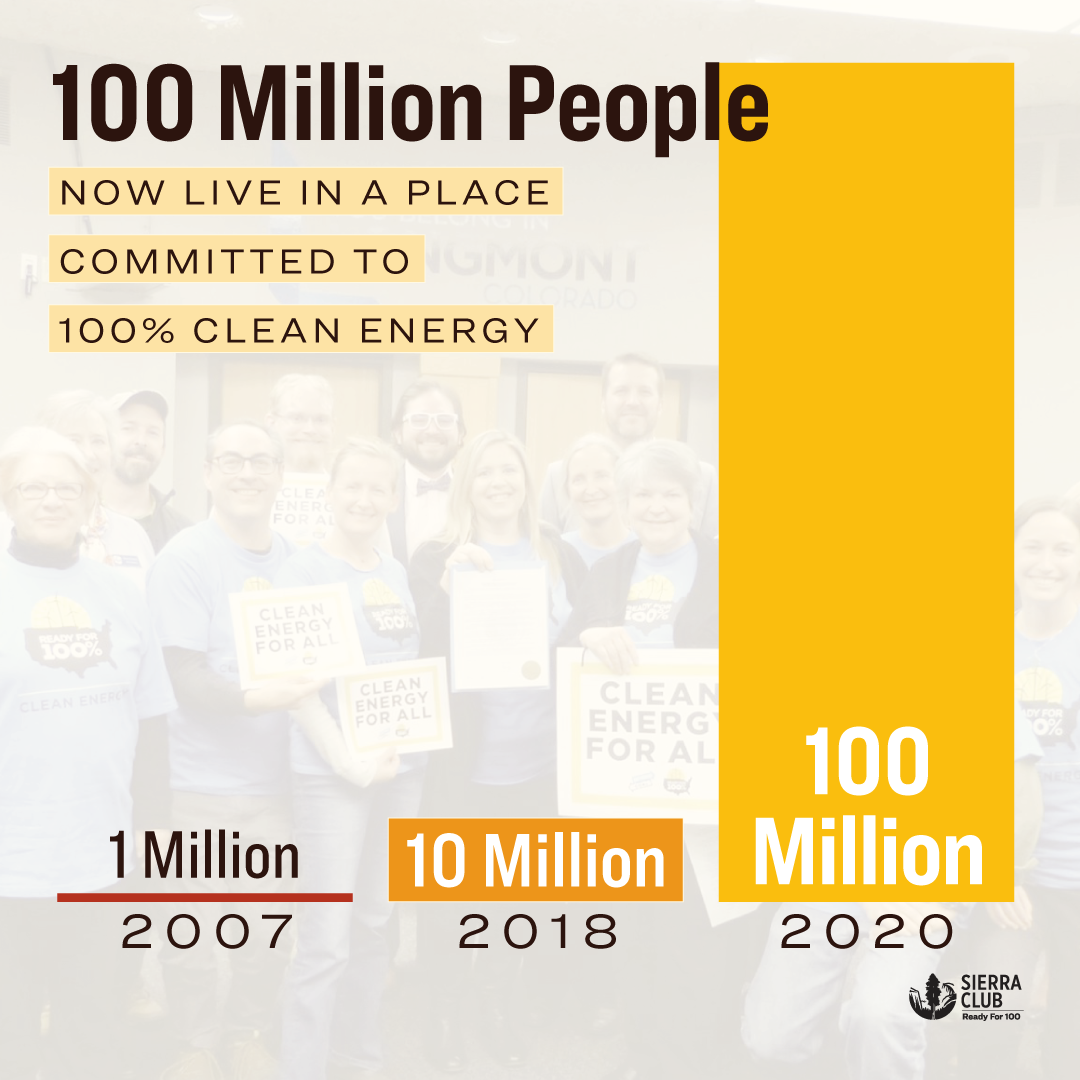Last month, Virginia became the eighth state to formally establish a goal of 100 percent clean, renewable electricity. With the passage of the Virginia Clean Economy Act, Virginia activists helped achieve a major milestone for the state and the country: Over 100 million people in the United States now live in a city, county, or state committed to powering itself entirely with clean energy.
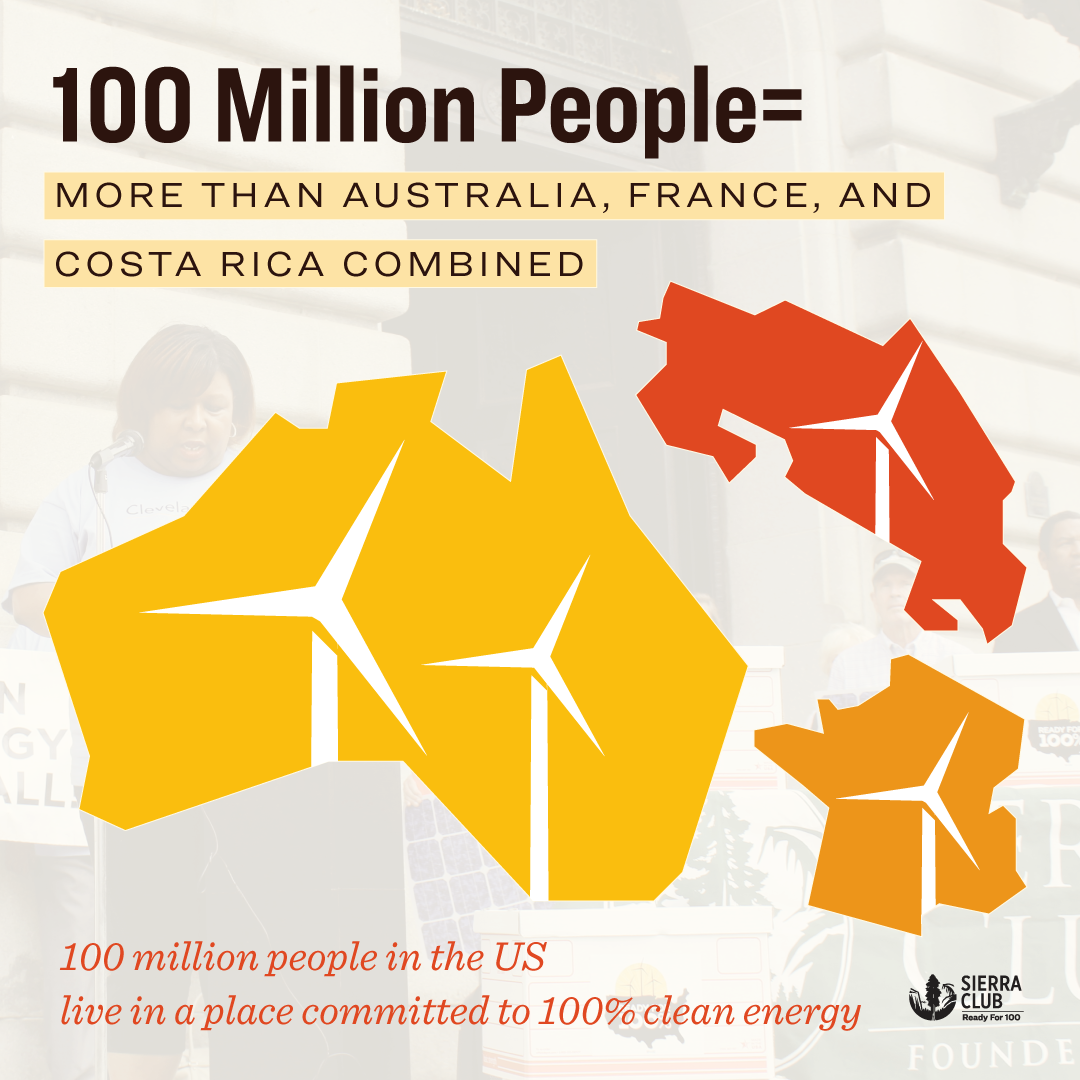
Virginia is the first state in the South to go all-in on 100 percent clean energy, joining the ranks of states like Washington and New York, and cities including Chicago, Atlanta, and Salt Lake City. Over the years, the Ready For 100 campaign has maintained the definitive list of cities, counties, states, and jurisdictions that have enshrined 100 percent goals in law. The campaign also tracks the places that have already reached the goal and now run on clean and renewable sources of electricity, including Aspen, Colorado, and Santa Monica, California. Over 150 local Ready For 100 teams have been instrumental in moving their communities to prioritize an equitable transition to renewable energy. But this victory is not ours alone—it belongs to everyone engaged in the fight for justice and a cleaner, healthier, more equitable world.
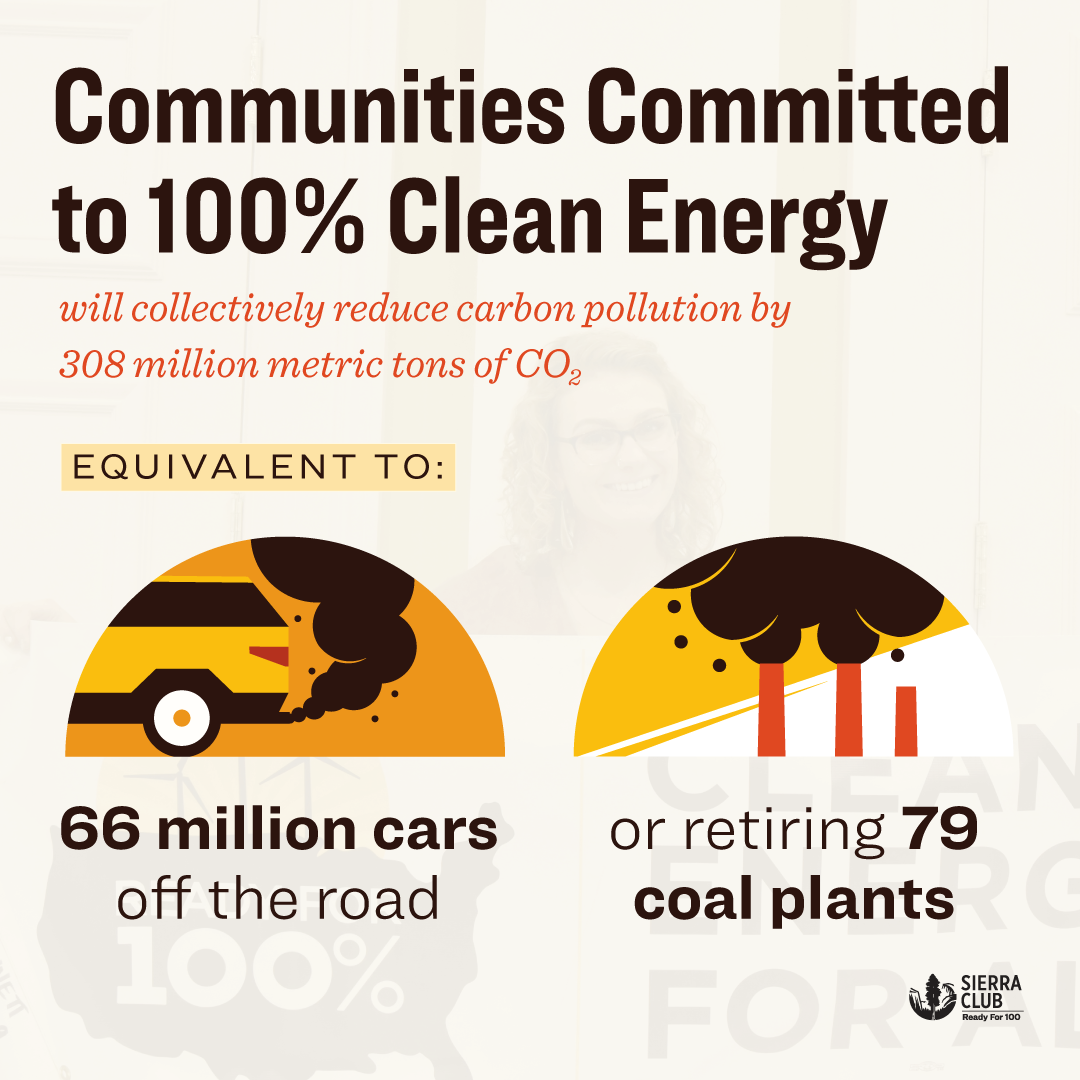
All told, progress toward our clean energy future has never been stronger—and yet we reach this milestone in the midst of the most uncertain, painful, and challenging moments. COVID-19 has taken thousands of lives, disrupted countless others, and upended our collective sense of what is possible, and what must be prioritized, in the months and years ahead. One thing is clear: We must continue to look out for the most vulnerable members of our communities, who are suffering disproportionately from this pandemic, who bear the brunt of the injustices perpetrated by the fossil fuel economy, and who have fewer safety nets in general. In this sense, our communities’ response to the COVID-19 and climate crises might be one and the same.
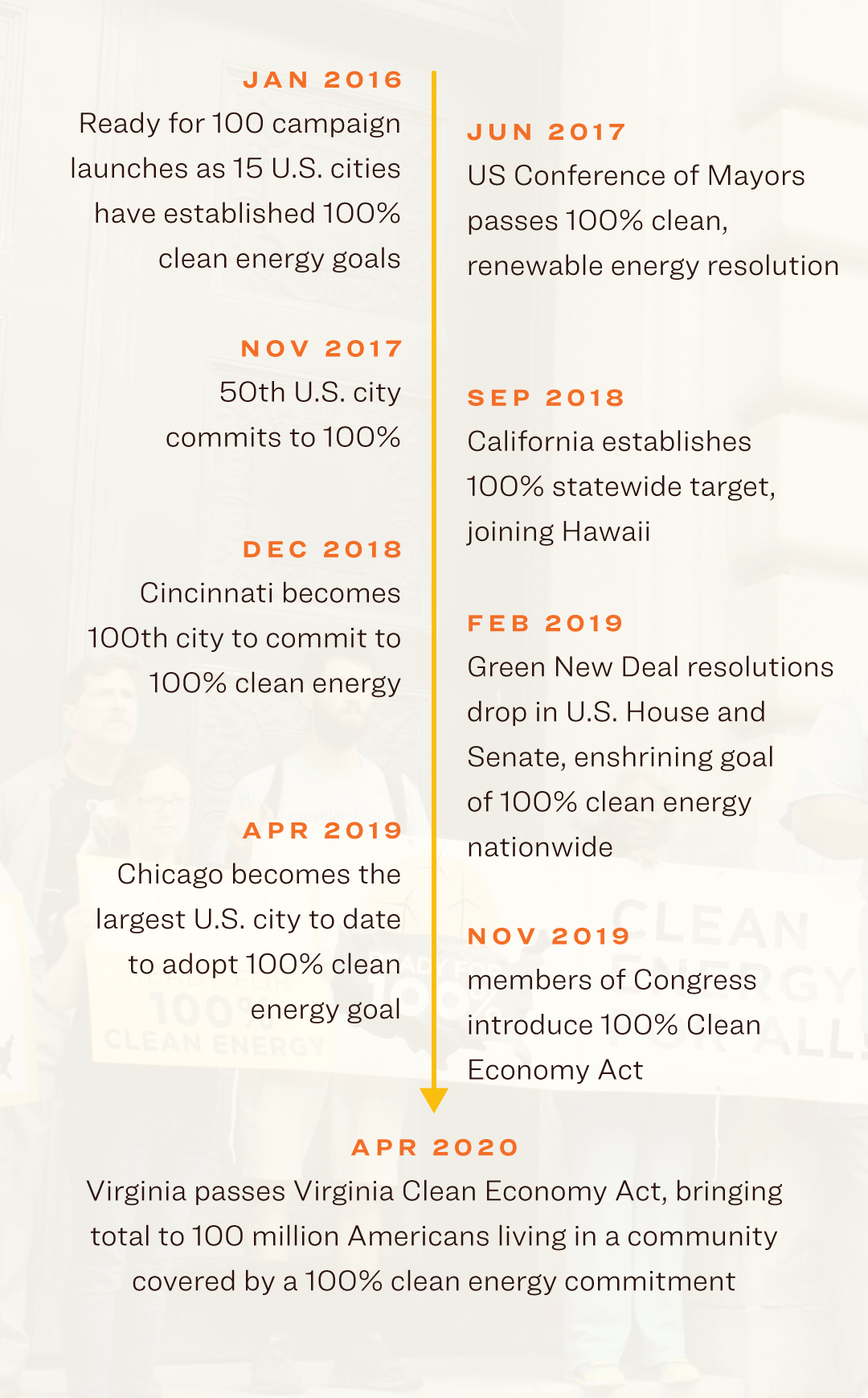
Here’s what we know:
-
Demand for 100 percent clean, renewable energy is only growing—this is a vision shared by communities in every corner of the country, supported by majorities of people across political lines, and showing up everywhere from town meetings to Green New Deal platforms to COVID-19 recovery plans.
-
Embracing 100 percent clean energy is about more than solar panels and wind turbines—it’s about building resilient communities, improving public health, strengthening local economies, and creating a new energy system that puts workers and families first. The movement for a just and equitable transition that leaves no one behind extends well beyond any one campaign.
-
To achieve a vision of 100 percent clean energy for all, we’ll need everyone.
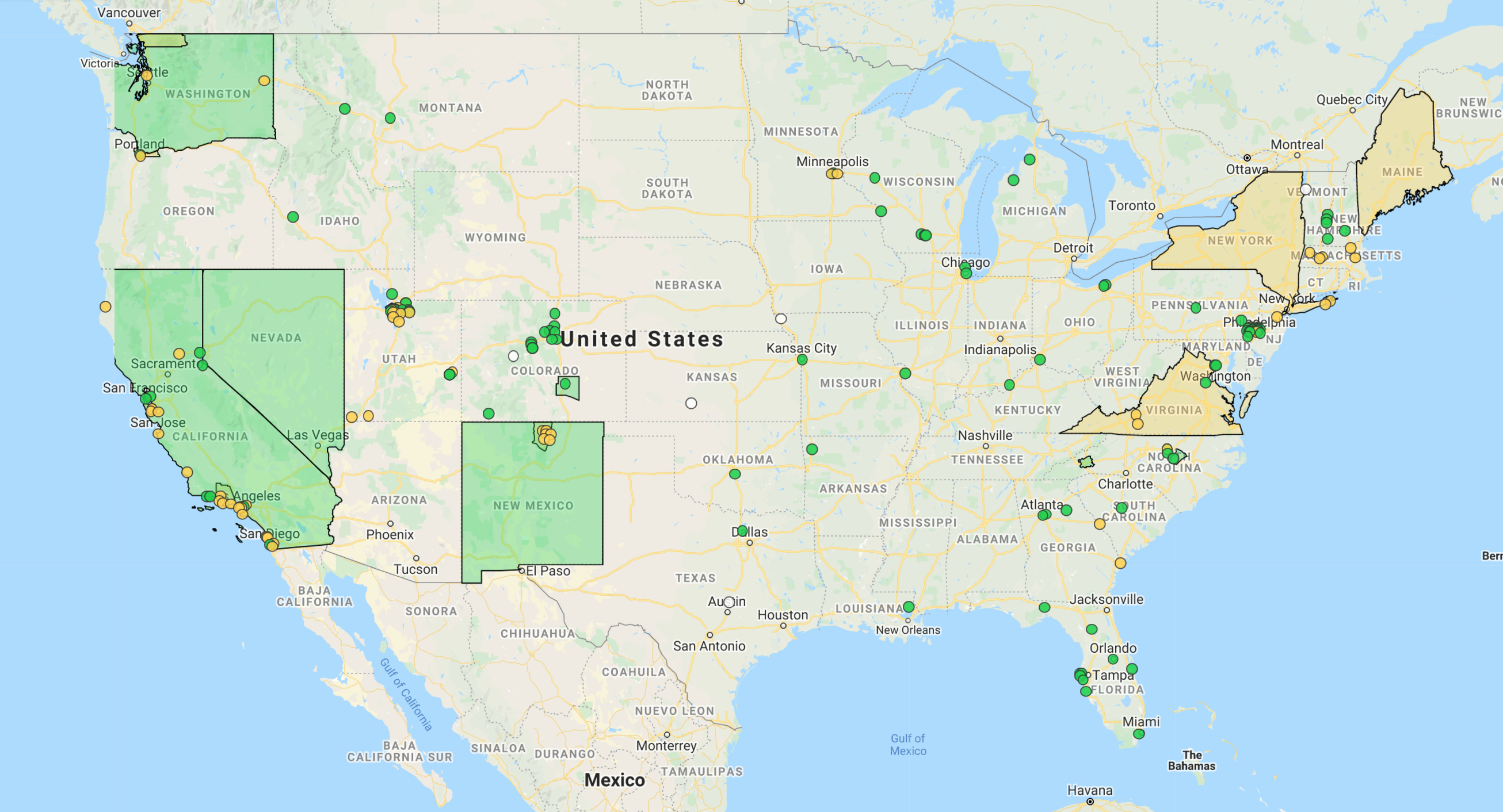
100 percent clean energy commitments in the continental United States. Ready For 100
Today, a total of 100 million people, nearly 1 in 3 in the US, are living in a place with a target of 100 percent clean, renewable power. This milestone was made possible by the activists fighting for clean air, economic opportunity, and environmental justice for all in their communities. Here are a few of their stories.
Alice Redhead: Virginia
Last year, Arlington became the largest locality in Virginia to commit to 100 percent clean, renewable energy and to detail a plan for achieving the goal. Fredericksburg followed soon after—and this year, the entire state adopted legislation that requires Virginia to be powered with 100 percent clean energy by 2050.
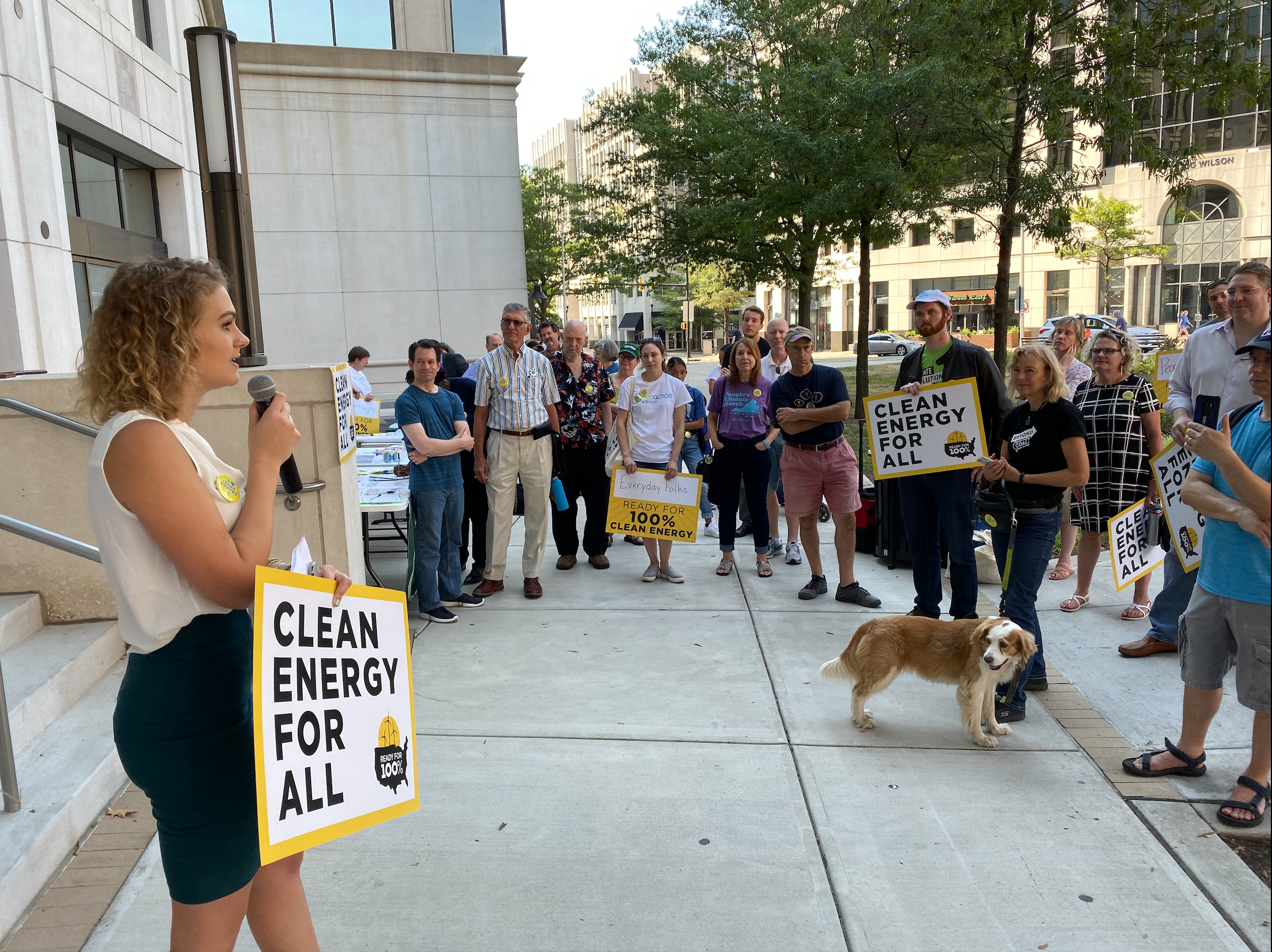
Alice Redhead in Arlington, VA, supporting 100 percent clean, renewable energy. Courtesy of the Sierra Club Virginia Chapter
The Virginia Clean Economy Act is historic legislation that creates a path for the state to achieve a clean energy future by enacting a mandatory renewable energy portfolio standard and requiring the closure of all carbon-polluting power plants. The bill also includes provisions that activists had long advocated for, such as joining the Regional Greenhouse Gas Initiative, removing barriers to solar access, and creating the state’s first mandatory energy-efficiency standard. And, the legislation provides new mechanisms for local governments to transition to 100 percent renewable sources of energy.
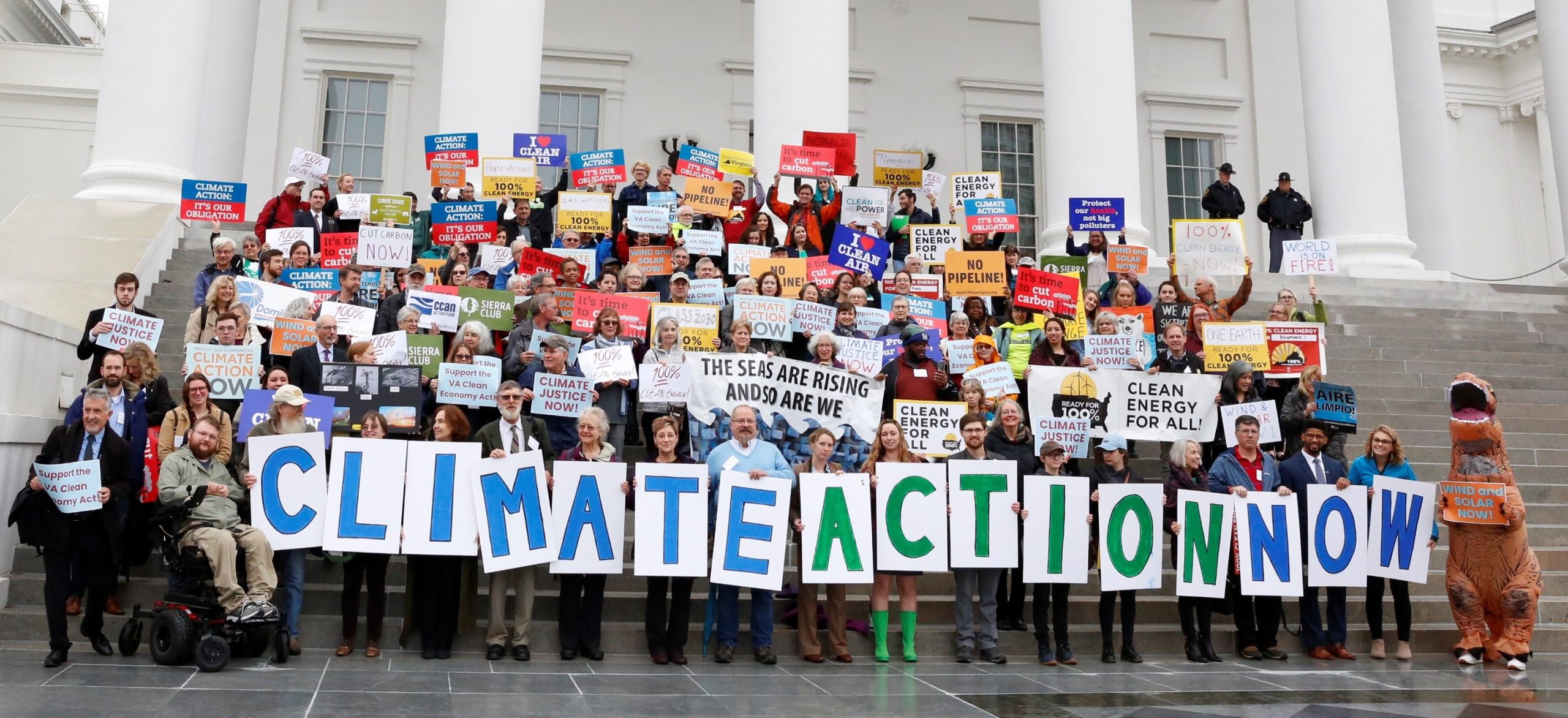
Supporters of the Virginia Clean Economy Act. Courtesy of the Sierra Club Virginia Chapter
Activists like Alice Redhead (who works in communities across the state to achieve a just transition) are thrilled. This victory was the result of the collective efforts of many organizations, activists, and clean energy businesses, along with a strong grassroots push that helped elect a clean energy majority to the state legislature in 2019. In addition to helping reach this milestone of 100 million people living in places committed to 100 percent clean, renewable energy, this legislation serves as inspiration for other states looking to make clean energy progress.
Yvonka Hall: Cleveland
In September 2018, the city of Cleveland adopted a goal of 100 percent clean, renewable energy for all. Yvonka Hall, the executive director of the Northeast Ohio Black Health Coalition, is a leading voice bringing attention to the environmental justice issues of dirty air and water, which cause disproportionate health problems in Black communities.
Yvonka Hall speaking at a 100 percent clean energy press conference in Cleveland. Courtesy of Chad Stephens
Cleveland has some of the oldest housing stock in the country, and drafty buildings and old construction mean high energy bills for too many households. Families and clean energy advocates stand to benefit from energy efficiency and weatherization— and these are important first steps before other distributed energy solutions, like rooftop solar, can be implemented. But there’s more than one reason that Cleveland’s homes and buildings need updates: Lead poisoning is a serious problem for Cleveland families, particularly among communities of color. By updating buildings and rooting out pollution where people live, Cleveland could ensure every household has a toxin-free and energy efficient home. These interwoven issues show how a just transition is really about improving the lives of all communities.
When COVID-19 cases reached the state in mid-March, Ohio’s governor issued a stay-at-home order. For many families and workers, keeping both food on the table and the lights on has become financially difficult. In many cases, the same low-income households and communities of color that are impacted by high energy bills and lead poisoning are also the most vulnerable in the current crisis. “People were impacted by the shutdown from schools across Ohio,” said Yvonka. She and her team worked quickly to meet the moment. They were inspired to help families that were likely to fall through the cracks of other food programs. The program is currently servicing 80 children with 2,200 meals every two weeks through the Babies and Brunch Project.
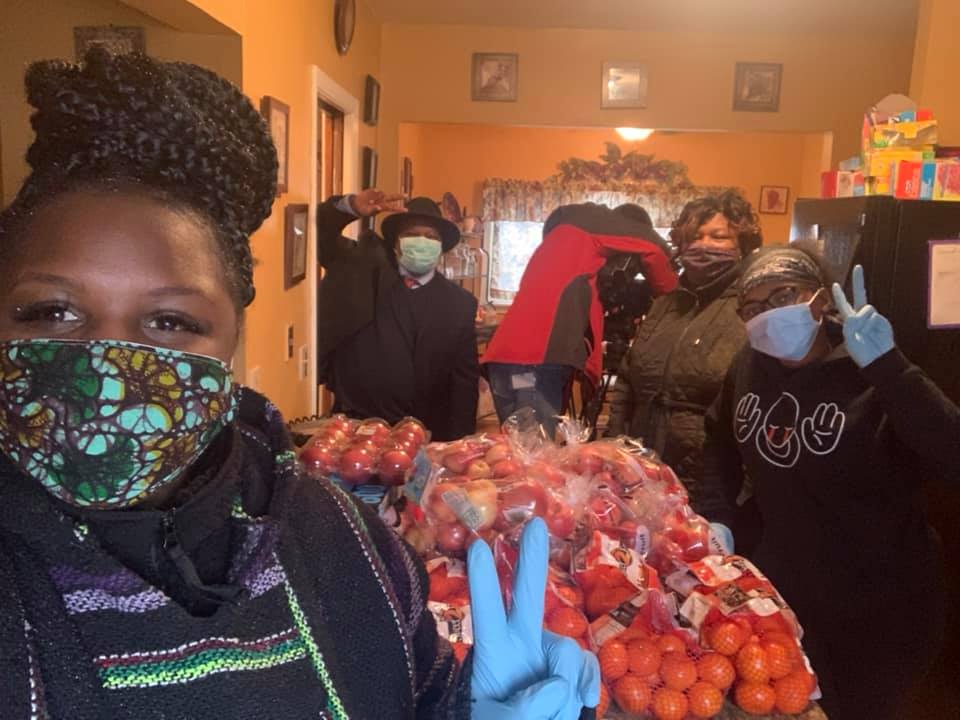
Babies and Brunch team preparing meals for Cleveland children during COVID-19. Courtesy of Yvonka Hall
In Cleveland, before and after COVID-19, healthy communities, a flourishing local economy, and environmental justice should not be separate outcomes. Ultimately, 100 percent clean energy will be possible only with the precondition of community resilience for all.
Karen Dike: Longmont, Colorado
Karen Dike, a retired nurse and grandmother, has been working to organize her community alongside members of Sustainable Resilient Longmont in support of a 100 percent renewable energy commitment. Longmont, Colorado set the target in 2018, soon to be followed by Fort Collins, Estes Park, and Loveland on the state’s gas-rich Front Range. Together, these cities work in partnership with their utility, Platte River Power Authority, whose board of directors unanimously approved its own carbon-free target by 2030.
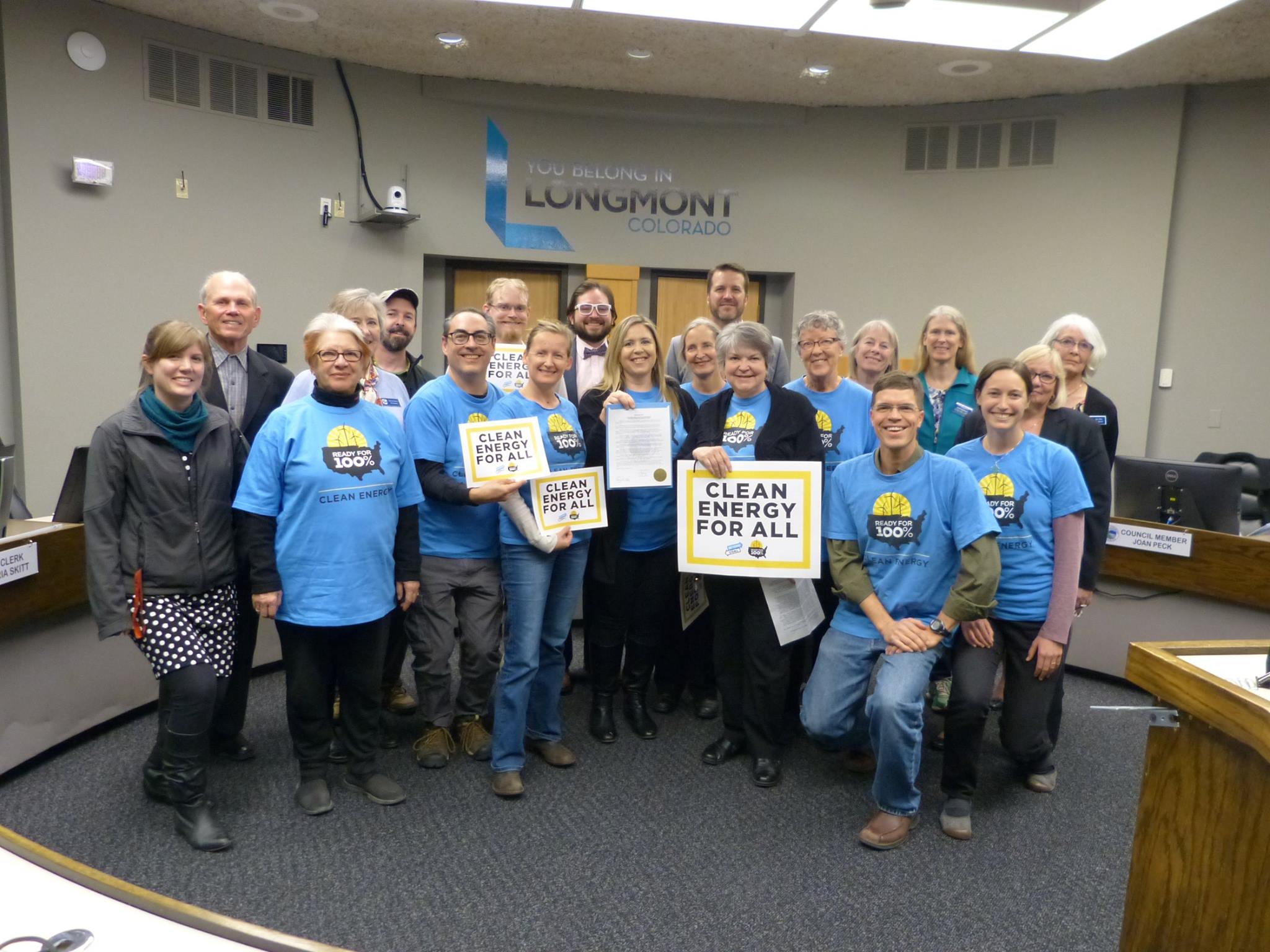
Karen Dike and Sustainable Resilient Longmont celebrating 100 percent clean energy for Longmont. Courtesy of Sustainable Resilient Longmont
“Dirty air is a major threat to the well-being of families and workers in my community. Now, as people who live in places with poor air quality—especially vulnerable populations—are at higher risk for COVID-19, it’s clearer than ever that an energy system that relies on fossil fuels must transform,” said Karen. “Two years ago, Longmont committed to 100 percent renewable energy to put the health of our community first. I’m proud our region is working together to take action on climate change now, and for future generations.”
